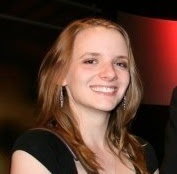As "The Lovely Bones" went wide last weekend, most critics and audiences seemed to agree that something is missing in this adaptation of Alice Sebold's bestselling novel. With each page-to-screen adaptation that has populated theaters in recent years, it feels like fans of the source material always find something to criticize. So what exactly makes a good big screen adaptation of a beloved book?
To me, the best adaptations are the ones that are faithful enough to the original that the essence of the book is still intact, but the directors aren't afraid to interweave their own artistic vision. The "Harry Potter" movies, at least "Prisoner of Azkaban" through "Half-Blood Prince" immediately spring to mind.
Once Alfonso Cuaron took the reigns from Chris Columbus, the "Potter" films have maintained the books' magical spirit and increasingly darker tone, but the directors haven't produced verbatim reproductions of the books. They don't sacrifice their own creative vision but stay faithful to the spirit of the source material.
The same can be said of "Up in the Air." I haven't read the book upon which the George Clooney-starring film is based, but supposedly the film is vastly different, changing events and adding characters. But despite the differences, the book's author, Walter Kirn, has said he approves of the movie because it still feels like his story and his characters. Director Jason Reitman creates a happy medium between his own vision for the story and Kirn's vision when translating "Up in the Air" from page to screen.
But while these films are more successful adaptations in my book, others fall under two extremes: too faithful to the story or not faithful enough. The "Twilight" films, entertaining as they might be, come to mind as adaptations that suffer from being too faithful to the source material.
The team behind the films seems to think the fans would be up in arms if the movies strayed even in the slightest from the books, but what results is dialogue that comes across as forced and stale. What reads well on the page doesn't always sound right on camera. If the writer and directors exercised more creative freedom, the story would likely flow better onscreen.
Unfortunately, "The Lovely Bones," which I had high hopes for, falls under the second extreme and differs from the book too much. "The Lovely Bones" has in its favor an incredibly talented cast and an Oscar-winning director. But Peter Jackson spends too much time on visual effects and too little time on how the protagonist's death affects the people she left behind. The book has so many rich supporting characters, and most of their storylines were cut so severely that the movie, while still a decent film, did not feel like the book.
At times Jackson delved into the book's raw emotion, then jumped right back to his effects, then tried to lighten the mood with some comedic moments. As a result the film felt disjointed, like it couldn't decide what it wanted to be. It contained glimpses of Sebold's rich novel, but ultimately strayed too far and fell flat.
What do you think? What makes a good big-screen adaptation? What are some of your favorites? Sound off in the comments section.
Are libraries obsolete? – I think not!
11 years ago

No comments:
Post a Comment